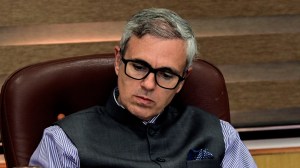Rationalisation of freight structure
Concerned about continued loss of traffic to the road sector, the Railways did not increase the freight rates for any commodity. In fact, th...

Concerned about continued loss of traffic to the road sector, the Railways did not increase the freight rates for any commodity. In fact, the rationalisation of freight structure would bring down the rates of certain commodities by 5.3 to 10.7 per cent.
With the rationalisation, the railways hoped to increase the freight traffic from 515 million tonne this year to 540 million tonne during 2003-2004, envisaging a five per cent growth. The target for 2002-2003 was 510 million tonne. Railway minister Nitish Kumar said that the thrust of the budget was to increase the railway share in transport sector, and to make the rates competitive.
|
Cross-subsidisation
at Rs 5,000cr |
| NEW DELHI: Railway minister Nitish Kumar claims that he is not sure how much freight rates are subsidising passenger fares. And to know for sure, he announced a reform agenda bringing about major accounting reforms. It was earlier estimated that cross-subsidisation was to the tune of Rs 5,000 crore. ‘‘It is not confirmed whether it is Rs 4000 or Rs 5000 crore because of the warped accounting system being followed till now,’’ he said. And once railways knew, Nitish said, he would ask the Centre to compensate for the social obligation of the railways. The existing accounting policies would be reviewed and a fully computerised accounting and Management Information System introduced. This would generate accurate costing data on passenger and freight services on commercial lines. (ENS) |
Certain goods — where railways specially were facing stiff competition — were re-classified. This would mean lowering in freight rates of petrol, High Speed Diesel, furnace oil, crude oil, naptha, LPG, compressed gasses, iron and steel, pig iron, cement sheets and petroleum coke.
Even goods like molasses, bitumen, refined vegetable oils and sulphuric acid would be charged at rates two stages lower than their existing classes. With the rationalisation, the total number of classes were reduced from 59 to 32 with Class-90 as the lowest and Class- 300 as the highest. The ratio between the highest and the lowest freight rate was reduced from eight to 3.3.
In the year, that he declared as the Year of Customer Satisfaction, Nitish Kumar said they expect to improve their performance not only in terms of passenger earnings but also in terms of earnings from freight and parcel traffic.







- 01
- 02
- 03
- 04
- 05
























